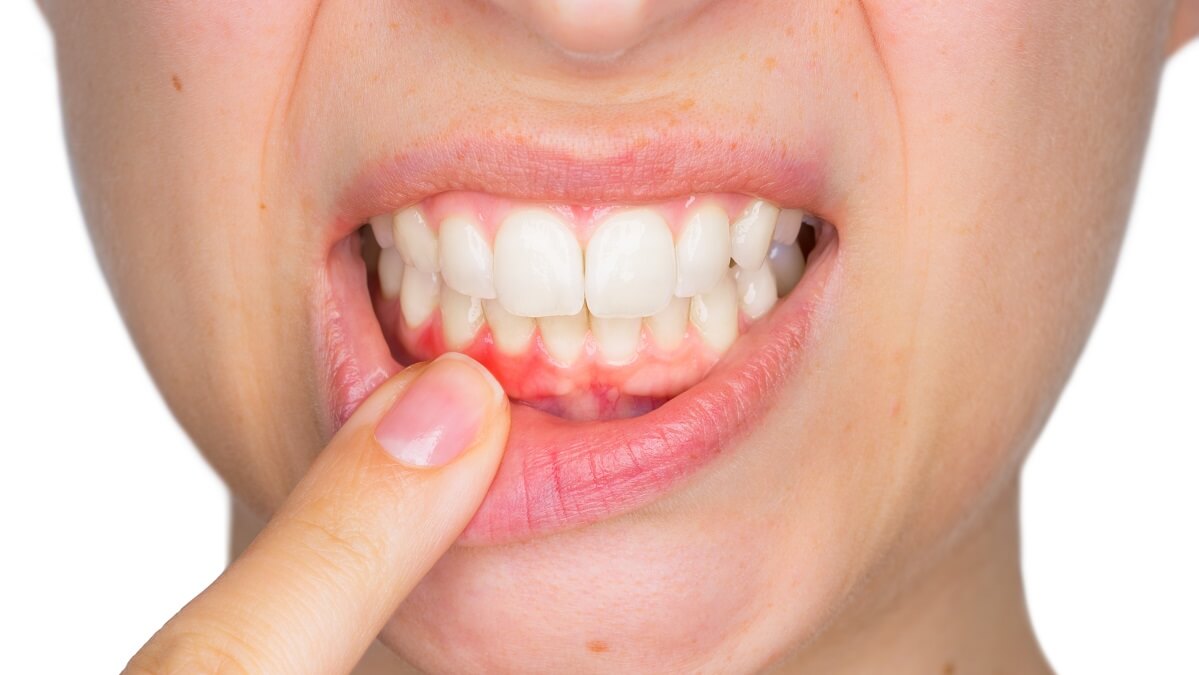Periodontitis, also called gum disease, is a serious gum infection that damages the soft tissue. If left untreated, gum disease can destroy the bone that supports your teeth and cause them to loosen or fall out.
The condition is common but largely preventable. Brushing twice a day and flossing regularly is the best way to keep your gums healthy, and you should also see your dentist for regular check-ups. If you have any symptoms of gum disease, such as bleeding gums or bad breath, be sure to see your dentist right away.
Symptoms of gum disease
Healthy gums are firm and pale pink and fit snugly around teeth. Signs and symptoms of periodontitis can include:
- swollen or puffy gums
- bright red, dusky red or purplish gums
- tender gums
- gums that bleed easily
- pink-tinged toothbrush after brushing
- spitting out blood when brushing or flossing your teeth
- bad breath
- pus between your teeth and gums
- loose teeth or loss of teeth
- painful chewing
- new spaces developing between your teeth
- receding gums
- a change in the way your teeth fit together when you bite.
Read: What your mouth says about you
Revolutionary new treatment
Now, a dental gel for gum disease may provide a cure for the condition by protecting people from harmful inflammation in the mouth.
Researchers in New York say the topical therapy could potentially revolutionise the treatment of a condition that affects almost 50 per cent of adults over 30.
“No current treatment for gum disease simultaneously reduces inflammation, limits disruption to the oral microbiome, and prevents bone loss. There is an urgent public health need for more targeted and effective treatments for this common disease,” says study co-first author Dr Yuqi Guo, an associate research scientist in the Department of Molecular Pathobiology at NYU Dentistry.
According to Dr Guo, the topical gel developed by the research team works by targeting and blocking the receptor for succinate – a naturally occurring molecule produced during metabolism.
“The level of succinate increased in patients with periodontitis and our previous study discovered that succinate elevation led to activation of the succinate receptor to stimulate inflammation and bone loss,” Dr Guo told Medical News Today. “These findings made the succinate receptor an appealing target for countering inflammation and bone loss – and potentially stopping gum disease in its tracks.”
For the study, Dr Guo and her team administered the topical gel compound to human gum cells in a laboratory setting. Scientists reported the compound reduced inflammation and processes that lead to bone loss.
Read: Why does your breath smell bad?
Researchers also applied the topical gel to the gums of mice with gum disease. They observed a reduction in local and systemic gum inflammation, as well as bone loss, in a few days.
“When the gel was applied to the gums of mice with gum disease every other day for four weeks, the bone loss was reduced [by] 50 per cent,” Dr Guo added. “Mice treated with the gel also had significantly less inflammation and prominent changes to the bacterial composition in their mouths.”
Dr Guo said the research team’s next steps for the topical gel are to test its efficacy in a non-human primate model and determine its safety through toxicity tests.
Currently, dentists can clean infected areas, but the tissue is often so damaged that by the time it begins healing, new infections start to set in. Accelerating healing could cure the chronic and recurrent disease.
Further tests need to happen in order to achieve the ultimate goal of producing a gel and oral strip that people can use at home to reverse or prevent gum disease.
Dentists hope they will even be able to apply a stronger, slow-release formulation to germ pockets that form in the gums.
Read: Facts about gum disease
“Current treatments for severe gum disease can be invasive and painful. In the case of antibiotics, which may help temporarily, they kill both good and bad bacteria, disrupting the oral microbiome. This new compound that blocks the succinate receptor has clear therapeutic value for treating gum disease using more targeted and convenient processes,” concludes Xin Li, professor of molecular pathobiology at NYU Dentistry.
The study is published in the journal Cell Reports. Do you suffer from gum disease? What would a gel like this mean to you? Let us know in the comments section below.

